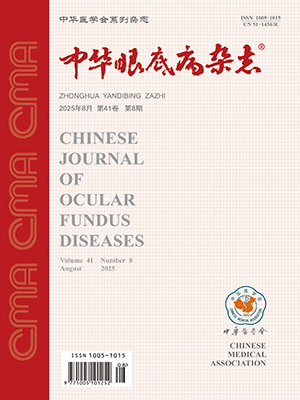| 1. |
|
| 2. |
Bollmann L, Koser DE, Shahapure R, et al. Microglia mechanics: immune activation alters traction forces and durotaxis[J/OL]. Front Cell Neurosci, 2015, 9: 363[2015-09-23]. https://pubmed.ncbi.nlm.nih.gov/26441534/. DOI: 10.3389/fncel.2015.00363.
|
| 3. |
|
| 4. |
|
| 5. |
Dudiki T, Meller J, Mahajan G, et al. Microglia control vascular architecture via a TGFβ1 dependent paracrine mechanism linked to tissue mechanics[J/OL]. Nat Commun, 2020, 11(1): 986[2020-02-20]. https://pubmed.ncbi.nlm.nih.gov/32080187/. DOI: 10.1038/s41467-020-14787-y.
|
| 6. |
|
| 7. |
|
| 8. |
Tripathy KC, Siddharth A, Bhandari A. Image-based insilico investigation of hemodynamics and biomechanics in healthy and diabetic human retinas[J/OL]. Microvasc Res, 2023, 150: 104594[2023-08-12]. https://pubmed.ncbi.nlm.nih.gov/37579814/. DOI: 10.1016/j.mvr.2023.104594.
|
| 9. |
|
| 10. |
|
| 11. |
|
| 12. |
|
| 13. |
|
| 14. |
|
| 15. |
|
| 16. |
Molins B, Mora A, Romero-Vázquez S, et al. Shear stress modulates inner blood retinal barrier phenotype[J/OL]. Exp Eye Res, 2019, 187: 107751[2019-08-05]. https://pubmed.ncbi.nlm.nih.gov/31394104/. DOI: 10.1016/j.exer.2019.107751.
|
| 17. |
|
| 18. |
|
| 19. |
|
| 20. |
|
| 21. |
Gomez-Cruz C, Fernandez-de la Torre M, Lachowski D, et al. Mechanical and functional responses in astrocytes under alternating deformation modes using magneto-active substrates[J/OL]. Adv Mater, 2024, 36(26): e2312497[2024-04-21]. https://pubmed.ncbi.nlm.nih.gov/38610101/. DOI: 10.1002/adma.202312497.
|
| 22. |
|
| 23. |
|
| 24. |
张颖, 王钰岚, 王楷群, 等. 基质刚度调节细胞-细胞外基质间黏附对肿瘤细胞迁移影响的模型研究[J]. 医用生物力学, 36(4): 604-611. DOI: 10.16156/j.1004-7220.2021.04.016.Zhang Y, Wang YL, Wang KQ, et al. Modeling study on the effect of matrix stiffness-regulated cell-extracellular matrix adhesion on tumor cell migration[J]. J Med Biomech, 2021, 36(4): 604-611. DOI: 10.16156/j.1004-7220.2021.04.016.
|
| 25. |
|
| 26. |
Chen Z, Liu B, Zhou D, et al. AQP4 regulates ferroptosis and oxidative stress of Muller cells in diabetic retinopathy by regulating TRPV4[J/OL]. Exp Cell Res, 2024, 439(1): 114087[2024-05-11]. https://pubmed.ncbi.nlm.nih.gov/38735619/. DOI: 10.1016/j.yexcr.2024.114087.
|
| 27. |
|
| 28. |
Lai A, Zhou Y, Thurgood P, et al. Endothelial response to the combined biomechanics of vessel stiffness and shear stress is regulated via piezo1[J]. ACS Appl Mater Interfaces, 2023, 15(51): 59103-59116. DOI: 10.1021/acsami.3c07756.
|
| 29. |
|
| 30. |
|
| 31. |
Deng H, Min E, Baeyens N, et al. Activation of Smad2/3 signaling by low fluid shear stress mediates artery inward remodeling[J/OL]. Proc Natl Acad Sci USA, 2021, 118(37): e2105339118[2021-09-14]. https://pubmed.ncbi.nlm.nih.gov/34504019/. DOI: 10.1073/pnas.2105339118.
|
| 32. |
|
| 33. |
Wei L, Gao J, Wang L, et al. Hippo/YAP signaling pathway: a new therapeutic target for diabetes mellitus and vascular complications[J/OL]. Ther Adv Endocrinol Metab, 2023, 14: 20420188231220134[2023-12-25]. https://pubmed.ncbi.nlm.nih.gov/38152659/. DOI: 10.1177/20420188231220134.
|
| 34. |
|
| 35. |
|
| 36. |
Rothschild PR, Salah S, Berdugo M, et al. ROCK-1 mediates diabetes-induced retinal pigment epithelial and endothelial cell blebbing: contribution to diabetic retinopathy[J/OL]. Sci Rep, 2017, 7(1): 8834[2017-08-18]. https://pubmed.ncbi.nlm.nih.gov/28821742/. DOI: 10.1038/s41598-017-07329-y.
|
| 37. |
|
| 38. |
|
| 39. |
|
| 40. |
|
| 41. |
|
| 42. |
Smith N, Georgiou M, Jalali MS, et al. Planning, implementing and governing systems-based co-creation: the DISCOVER framework[J/OL]. Health Res Policy Syst, 2024, 22(1): 6[2024-01-08]. https://pubmed.ncbi.nlm.nih.gov/38191430/. DOI: 10.1186/s12961-023-01076-5.
|
| 43. |
|
| 44. |
|
| 45. |
|
| 46. |
Liu YC, Lin YK, Lin YT, et al. Injectable, antioxidative, and tissue-adhesive nanocomposite hydrogel as a potential treatment for inner retina injuries[J/OL]. Adv Sci (Weinh), 2024, 11(11): e2308635[2024-01-17]. https://pubmed.ncbi.nlm.nih.gov/38233151/. DOI: 10.1002/advs.202308635.
|
| 47. |
Zhao F, Fan S, Ghate D, et al. A hydrogel ionic circuit based high-intensity iontophoresis device for intraocular macromolecule and nanoparticle delivery[J/OL]. Adv Mater, 2022, 34(5): e2107315[2021-12-08]. https://pubmed.ncbi.nlm.nih.gov/34716729/. DOI: 10.1002/adma.202107315.
|
| 48. |
|
| 49. |
|
| 50. |
|
| 51. |
Yang H, Huang Y, Chen X, et al. The role of CTGF in the diabetic rat retina and its relationship with VEGF and TGF-β(2) , elucidated by treatment with CTGFsiRNA[J]. Acta Ophthalmol, 2010, 88(6): 652-659. DOI: 10.1111/j.1755-3768.2009.01641.x.
|
| 52. |
|
| 53. |
|
| 54. |
|
| 55. |
|




